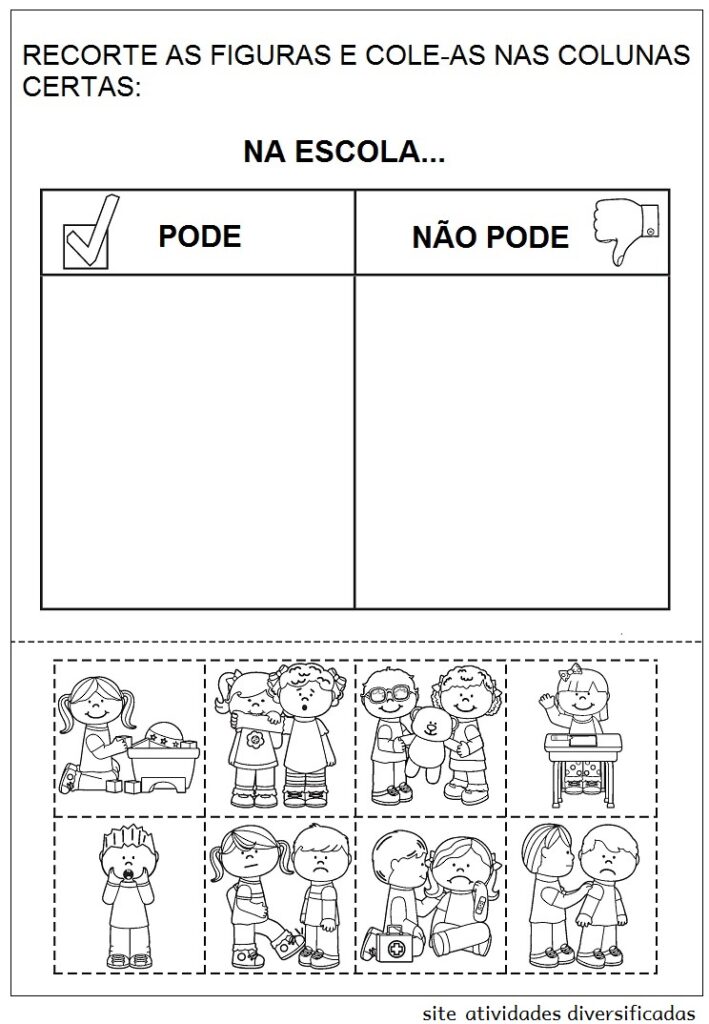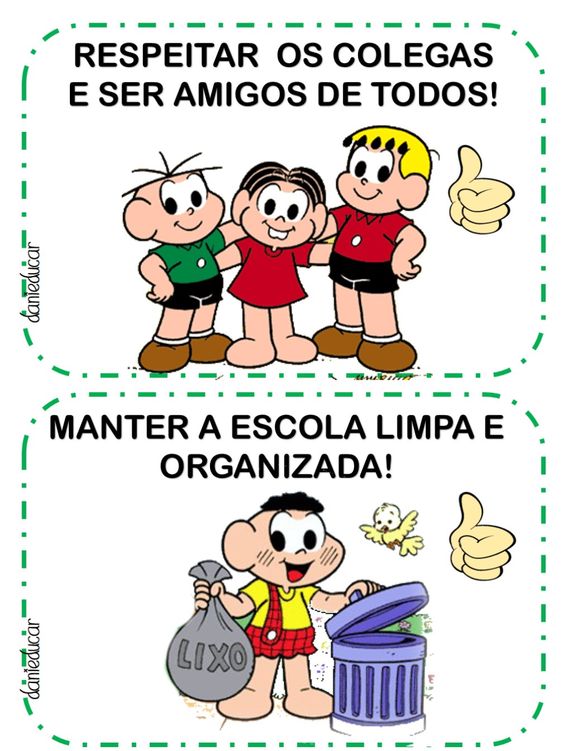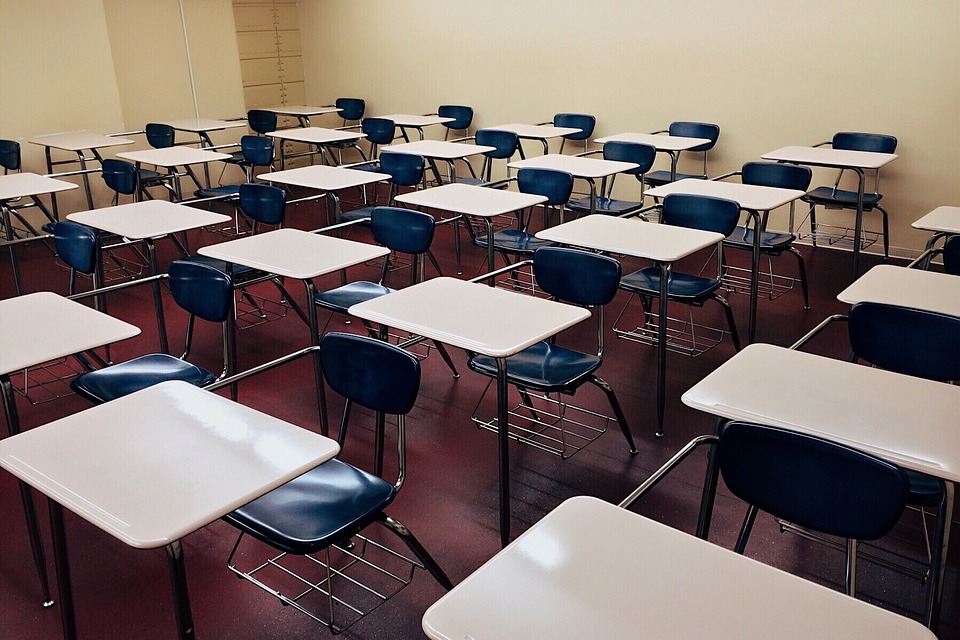1. Objectives
– Provide a clear and comprehensive understanding of the rules of coexistence in Early Childhood Education, according to the BNCC.
– Develop social, emotional and cognitive skills in children, promoting a harmonious and welcoming school environment.
– Encourage mutual respect, empathy and cooperation among students, contributing to the formation of more aware and responsible citizens.
2. Introduction
– The teacher will start the class by reminding you of the importance of respecting the rules of coexistence at school and explaining that these rules help maintain order, respect and safety for everyone.
– Everyday school situations will be presented that highlight the importance of following the rules, such as respecting the turn to speak, using school supplies correctly and treating colleagues with kindness.
– The benefits of harmonious coexistence will be highlighted, such as good relationships with colleagues, promoting everyone's well-being and building a welcoming environment.
3. Development
3.1. Regras de convivência na Educação Infantil
– The teacher will revisit the main rules of coexistence in Early Childhood Education, such as: respecting colleagues, listening to the teacher, asking permission to leave the room, among others.
– The positive consequences of following these rules and the negative impacts of disrespecting them will be explored, encouraging children to reflect on their own attitudes.
3.2. Atividade prática
– A playful activity will be proposed, such as a dramatization or board game, in which children will be able to practice the rules of coexistence in a fun and interactive way.
– Students will be encouraged to discuss in groups imaginary situations in which the rules are broken and to find appropriate solutions for each case.
4. Return
4.1. Learning Check
– The teacher will ask students questions to check whether they understand the rules of coexistence presented and whether they can apply them in everyday situations.
– A group discussion will be held to share experiences during the practical activity and the learning obtained.
4.2. Student feedback
– Students will be invited to express what they liked most about the class, if they have questions or suggestions for future activities on the topic.
– The teacher will open space for children to share their perceptions and feelings regarding the rules of coexistence at school.
5. Homework
– Students will be guided to observe and reflect on the rules of coexistence at home and to develop a short list of good practices that they would like to share with the class in the next class.
6. Conclusion
– The teacher will reinforce the importance of respecting the rules of coexistence not only at school, but in all environments, promoting respect, harmony and mutual collaboration.
– It will be emphasized that good attitudes today contribute to the formation of more conscious and responsible citizens in the future, who will know how to live in a healthy and empathetic way with society.
7. Material de apoio








